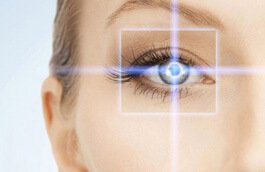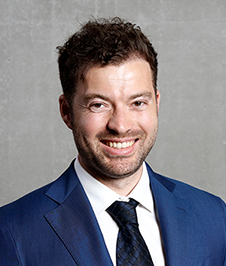
GLOSSARY - EVERYTHTING ABOUT EYES
Interesting facts and information In the field of laser eye surgery and lens treatment.
A
Refractive errors that can’t be corrected with glasses.
Individually guided laser ablation
The term ablation refers to the removal of body tissue
Short for axis. This indicates the axial position of the astigmatism in degrees.
A nearsightedness, which is caused by an elongation of the eye.
Adaptation of the retinal cells to different light stimuli.
Short for Addition. This term refers to the additional correction of presbyopia in diopters.
The ability of the eye to adjust focus on both near and far objects without glasses. The weakening of this ability from about the age of 45 is called esbyopia: The patient then needs reading glasses
Distorted vision is a first, very serious indication of possible macular degeneration. Rapid treatment is needed, as already curred vision loss is hard to repair and the refractive deterioration has to be stopped.
Development of impaired vision in the first years of life, e.g. by strabismus or opacities in the cornea. It is resulted in different refractive powers between two eyes.
Deviation from normal vision: nearsightedness (myopia), farsightedness (hyperopia) and astigmatism.
A patient’s medical history.
Deviation of the spherical shape of the cornea
It refers to a special optic in the refractive condition of the eye.
Developmental disorder of the vision in the early stages of life, for example, by squinting or cloudiness in the cornea.
Corneal irregularity caused by refractive errors, individual points of an object are instead perceived as bars / sticks.
B
Measurement of different eyeball dimensions
Protective lens, which is worn after certain eye surgeries during the healing phase.
C
The body’s clear natural lens is replaced with an artificial lens.
It represents the front, clear transparent part of the outer skin of the eye. Its diameter is approximately 11 to 12 mm, its thickness is 0.5 to 0.6 mm in e center.
When cataract or cataract occurs, it usually results in a clouding of the lens, caused by age-related changes .
Single layer squamous epithelium as interior lining of the back surface of the cornea.
Abbreviation stands for cylinder and indicates the value of the corneal irregularity (astigmatism) in diopters.
D
Unit of measure of refractive power; if the eye is nearsighted, there is a minus sign in front of the value of the glasses or contact lenses. If the eye is far-sighted, there is a plus in front of the diopter number.
Disorder of the tear film due to too little tear fluid or rapid evaporation of tear fluid.
E
Is a normal vision, where the focal point hits accurately on the retina.
The Epi-LASIK is mainly used for correction of myopia and astigmatism when a femto-LASIK is not possible due to a thin cornea.
Outermost cell layer such as the membrane of the cornea.
UV laser that is used to correct refractive errors.
Eye tracking system for the laser eye treatment.
F
Point of intersection of the rays after refraction through the lens.
Special laser for preparing the corneal flap during the Femto-LASIK method.
The corneal lamella formed during the LASIK procedure.
The rear inner wall of the eyeball, visible through the transparent glass body
In hyperopia or hypermetropia, the eyeball is too short in relation to the refractive power of the optical device of the eye. The distant objects are clearly seen, but close vision is blurry.
Reciprocal of the distance between the lens and its focal point
G
As glaucoma is defined as an increase in pressure inside the eye, or an otherwise caused circulatory disorder that destroys the optic nerve.
Shifting of drainage channels in the eye with a sudden and severe rise in intraocular pressure.
The fees for doctors (GOA) governs the accounting of all medical services outside the public health insurance
H
Light sources are perceived with halos / light scattering.
A slight milky clouding of the lens, which can occur after a laser eye treatment.
The eyeball is too short in relation to the refractive power of the optical means of the eye. The distant objects are clearly seen, but close vision is blurry.
I
Refers to the physical pressure placed on the interior wall of the eye ball.
Intraocular contact lens or phakic lens implants, artificial lenses for correction of vision disorders. ICL implanted into anterior or posterior eye chamber.
Artificial lens, which is now used in the cataract surgery as a replacement for the body’s natural lens into lens capsule. There are also phakic IOL or ICL which are implanted into posterior chamber (standard) and anterior chamber. IOL are produced as foldable lenses (made of acrylic or silicone) and rigid lenses (Plexiglas).
Surgical removal of small parts of the iris while maintaining the pupil.
Iris, which gives the eye the color. It controls the pupil (aperture), which can zoom in and out.
Inflammation of the iris.
K
A corneal thinning, which causes the cornea to arch slightly outward due to the intraocular pressure.
Keratoconus (KC) is a vision disorder – the cornea is progressively thinning and in a result obtains a cone shape. This affects to the quality of vision – as a result blurry vision, double vision, nearsightedness or irregular astigmatism.
An inflammation of the cornea (keratitis) can be caused by an infection with a pathogen, but also be caused by non-infectious causes. Mainly an flammation caused by bacteria can develop a corneal ulcer, which in extreme cases can penetrate into the anterior chamber of the eye.
A fine razor-like instrument for preparing the corneal flap in LASIK.
L
Laser Ephitial Keratecotonmy which is the development of PRK.
Laser In Situ Keratomileusis. Method of refractive surgery to correct vision disorders by laser ablation (excimer laser) in the interior of the cornea.
Organ of the eye interior, which accounts for a large part of the refractive power of the eye and enables the so-called accommodation.
Artificial lens (IOL) which is implanted in addition to or as an alternative to the natural lens in the eye.
An artificial lens which is placed into the eye instead of the natural lens.
M
Point of sharpest vision on the retina, also called the yellow spot
The wet from of age related macular degeneration (AMD) leads to fluid buildup under the retina through leakages and to neovascularization.
Nearsighted or myopic can see distant objects worse than nearby objects. The light which comes from a distance and as the eyeball is too long therefore it’s is too strongly refracted the cornea and lens. That’s why the focal point of the eye lies in front of the retina. If the light comes from nearby, it is focused properly on the retina. Therefore, a nearsighted can see well up close.
N
Nearsighted or myopic can see distant objects worse than nearby objects. The light which comes from a distance and as the eyeball is too long therefore it’s is too strongly refracted the cornea and lens. That’s why the focal point of the eye lies in front of the retina. If the light comes from nearby, it is focused properly on the retina. Therefore, a nearsighted can see well up close.
O
This is the rear inner wall of the eyeball, visible through the transparent glass body.
Optical coherence tomography, an examination procedure befo cataract surgery
P
Measurement of the corneal thickness by ultrasound.
The values measured after a laser vision correction or lens surgery
All the values measured before a laser vision correction or lens surgery
Crushing of the lens nucleus using ultrasound or the laser beam energy of LenSx laser
From approximately the age of 45 the ability to see sharply up close noticeably decreases. The lens of the eye loses its elasticity, and the ability of the eye to focus is reduced. Reading glasses is then necessary.
Photorefractive Keratectomy (PRK) is the laser eye surgery procedure, run by the excimer laser, that shapes the second layer of the cornea. The flap is not prepared.
Circular hole in the iris, through which we can see.
An inspection device for determining the pupil diameter depending on different lighting conditions.
R
ReLEx® smile – Small incision lenticule extraction, laser vision correction is a minimally invasive type of laser eye surgery. With ReLEx ® smile, the VisuMax® laser enables the fusion of modern femtosecond technology and precise lenticule extraction to provide a minimally invasive vision correction – in one step.
Measure for the beam deflection of the light rays on a focal point, unit is reproduced in diopters.
Generic term for the various vision disorders (ametropia).
Retina, the organ in the back side of the eye that the incident light rays strike.
Means the light deflected. Deviation of the refractive power of the eye, in a perfect case
Myopia caused by the excessive refractive power of the cornea or lens
All the surgical procedures for the correction of refractive errors.
Objective measurement of the refractive power of the eye.
S
“The secondary cataract is the most common “side effect” of the cataract surgery. It consists of a thin layer cell that grows behind the tificial lens, and can increasingly degrade the visual acuity after a successful cataract surgery.” The secondary cataract can be easily removed by the laser procedure.
Biomicroscopic examination of the eye with a slit-shaped light source.
The sphere is measured in diopters. (Abbreviation stands for sphere)
V
Ability of the eye to perceive two points as separate.
Refractive error (ametropia) caused by an error in the construction of the eye or of the lens
The vitreous body (corpus vitreum) is a component of the eye of vertebrates. To obtain the shape of the eye, they contain a gel-like, translucent bstance, the vitreous body. The vitreous body is located between the lens and the retina. Consequently light, the collected from the lens passes through the vitreous body on its way to the retina. The vitreous body is composed of approximately 98% water as well as about 2% hyaluronic acid and a network of collagen fibers.
W
Technique for determining the total refractive error.


















Join our Newsletter